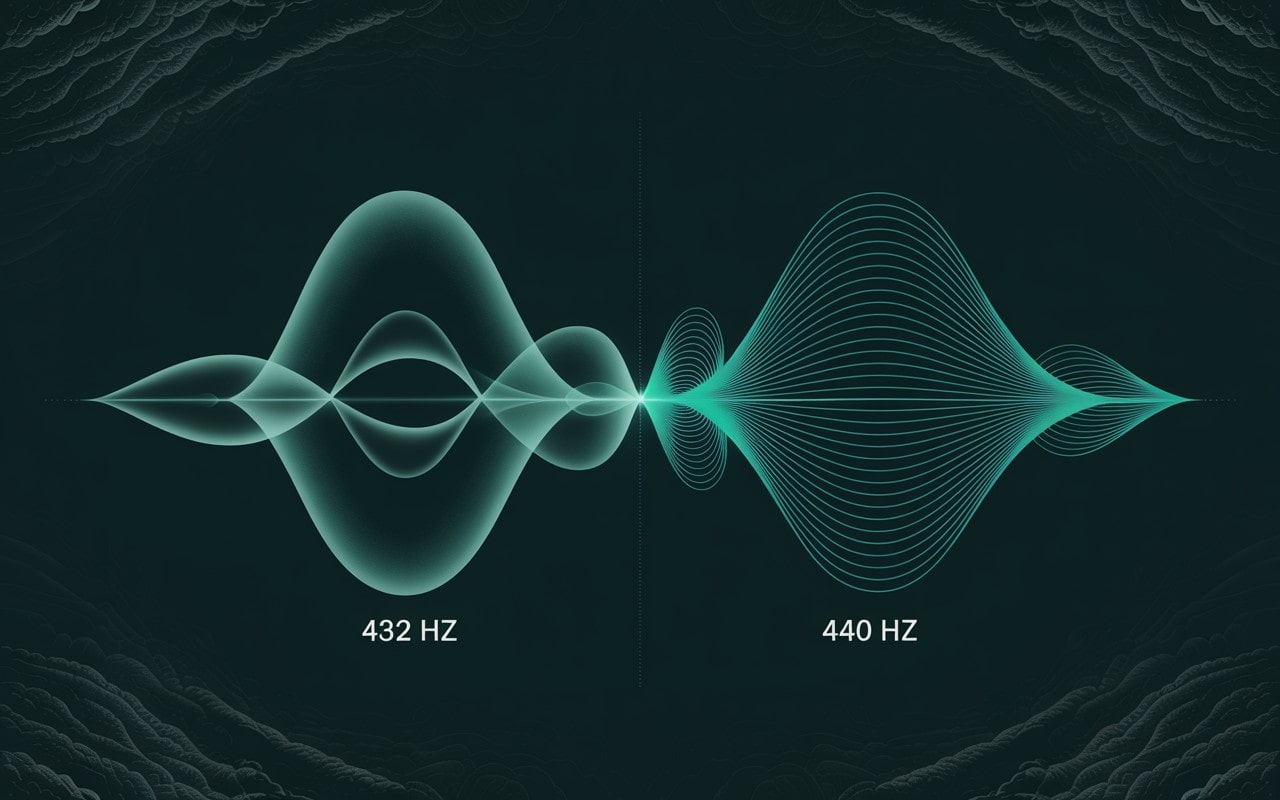432 Hz or 440 Hz? My thoughts after watching Adam Neely’s video
A few days ago, I watched a video by Adam Neely — you might know him: a brilliant bassist, music theorist, and YouTuber who conveys complex topics with humor and depth. This time, he tackled a question I’ve had in the back of my mind for a while: Is there really something special about tuning to A = 432 Hz?
I’ve heard many claims about it in the past. Some say music in 432 Hz is “healing,” more natural, resonating with the Earth or the human body. Others argue that 440 Hz — the current standard — is artificial, disharmonious, or even stressful. Sounds almost like a conspiracy theory, doesn’t it?
The History Behind It
Interestingly, 440 Hz wasn’t always the standard. In earlier times, musicians tuned anywhere between 400 and 460 Hz depending on region and era. It wasn’t until the mid-20th century that 440 Hz became dominant — not because of magic, but because the BBC and ISO needed a unified reference tone for broadcasting and industry. A practical decision, not a mystical one.
What Does 432 Hz Actually Sound Like?
I tried it out. And yes — it does sound a bit softer. Adam Neely demonstrates this impressively in his video: when you simply transpose a piece slightly lower, it feels more relaxed. But that’s not due to magical energy — it’s simply because our ears often perceive lower tones as warmer. Like hearing the same song in a lower key.
The Real Insight
What truly surprised me: it’s not the frequency itself that makes the big difference — it’s the system used to tune the notes relative to each other. Neely talks about temperament here. So whether you use 432 or 440 Hz — the intervals between the notes are what determine harmony, not the absolute reference pitch. And that’s what our ears actually perceive as “pure” or “dissonant.”
What Does This Mean for Us Musicians?
If you want to experiment with 432 Hz — go for it. Maybe you’ll like the sound. Maybe it suits your voice or instrument. But don’t go looking for hidden truths or cosmic harmony there. Music remains subjective, emotional — and that’s a good thing.
What I find far more important is this: how we communicate through music. How we experience it together. How we play with others, listen to each other, find the groove. None of that can be explained by a frequency. But it can be learned — through connection.
That’s Why Fretster Offers the Band Workshop
In the Band Workshop, we practice exactly that: making music together as a conversation. We tune into each other — regardless of whether it’s 432 or 440 Hz. We focus on dynamics, timing, emotion. And yes, sometimes intonation too.
If topics like this interest you — come join us. Try it out. Find your sound. And most importantly: play with others. Because whether it’s 432 or 440 — music only truly comes alive when it’s shared.



